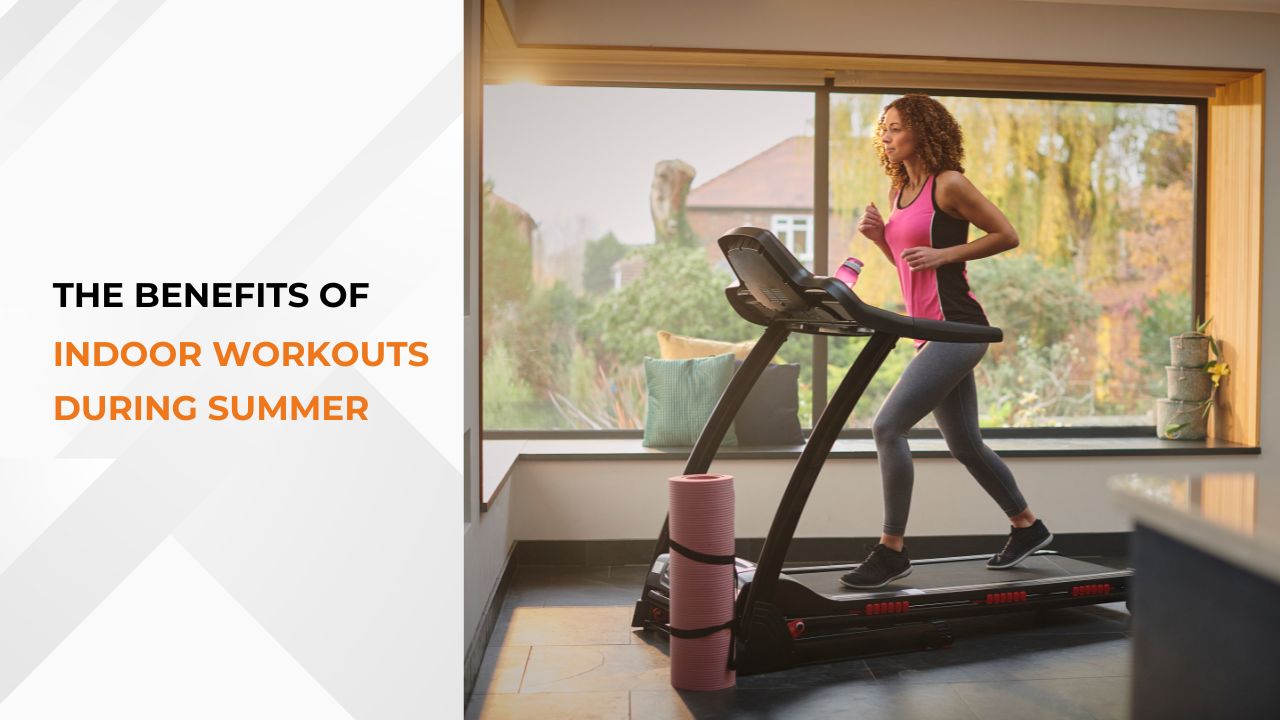Exercise for Better Posture: Fixing Rounded Shoulders

In today’s world, rounded shoulders are becoming an increasingly common issue due to prolonged sitting, desk jobs, and poor posture habits. Rounded shoulders, also referred to as “upper crossed syndrome,” occur when the muscles of the chest become tight and the muscles of the upper back become weak. This imbalance pulls the shoulders forward, creating a slouched posture that can lead to discomfort, pain, and even long-term musculoskeletal problems.
Fortunately, with the right exercises and mindful habits, you can improve your posture and fix rounded shoulders. In this blog, we’ll dive into the causes of rounded shoulders, the benefits of correcting them, and a step-by-step guide to the most effective exercises to help you regain a healthy, upright posture.
Causes of Rounded Shoulders
Before we jump into the exercises, it’s important to understand what causes rounded shoulders. Some of the most common culprits include:
1. Prolonged Sitting
Most people today spend hours sitting at desks, either working on computers, using their phones, or watching TV. This sedentary lifestyle encourages slouching, which, over time, leads to rounded shoulders and poor posture.
2. Poor Ergonomics
Incorrect desk or workspace setups, such as having your computer monitor too low, your chair too high, or your keyboard too far away, can encourage forward head posture and slumping of the shoulders.
3. Muscle Imbalances
If you spend too much time training your chest muscles without giving enough attention to your back muscles, it can lead to muscle imbalances. Tight pectoral muscles pull the shoulders forward, while weak upper back muscles (such as the rhomboids and trapezius) fail to keep your shoulder blades in a proper position.
4. Bad Habits

Everyday habits like walking with your shoulders hunched, carrying heavy bags on one shoulder, or looking down at your phone constantly (also called “text neck”) contribute to rounded shoulders over time.
Why Correcting Rounded Shoulders Matters
Correcting rounded shoulders is not just about aesthetics or looking taller; it can have several important health benefits:
1. Alleviate Pain and Discomfort
Poor posture and rounded shoulders can lead to back, neck, and shoulder pain. By fixing your posture, you reduce strain on your muscles and joints, minimizing discomfort.
2. Improved Breathing
Slouching compresses your chest cavity, which limits the ability of your lungs to fully expand. An upright posture helps open up your chest and improves your lung capacity, making breathing easier.
3. Better Mobility and Flexibility
Proper alignment of your shoulders and spine can improve your overall flexibility and range of motion, especially in your upper body. This means you’ll move more freely and with less effort during physical activities.
4. Boost in Confidence
Good posture exudes confidence and energy. By standing tall with your shoulders back, you project a sense of strength and assurance, which can positively impact your mood and self-esteem.
Now, let’s move on to the key exercises that will help you fix rounded shoulders and improve your posture.
Top 8 Exercises to Correct Rounded Shoulders
1. Chest Stretch (Doorway Stretch)
Since tight chest muscles contribute significantly to rounded shoulders, stretching them is a great way to begin. The doorway stretch helps release tension in your pectoral muscles.
- How to do it: Stand in a doorway with your arms at 90-degree angles, your forearms resting on either side of the frame. Step one foot forward and gently lean into the stretch, feeling a stretch across your chest. Hold for 20-30 seconds and repeat 2-3 times.
2. Scapular Squeezes
This exercise strengthens the muscles of your upper back (rhomboids and trapezius), which are essential for maintaining proper shoulder alignment.
- How to do it: Sit or stand with a straight back. Squeeze your shoulder blades together, imagining you’re trying to hold a pencil between them. Hold for 5-10 seconds, then release. Repeat 10-15 times.
3. Thoracic Extension
Improving thoracic spine mobility is crucial for fixing rounded shoulders, as it helps you stand taller with your chest open and shoulders back.
- How to do it: Sit on the floor with your knees bent and place a foam roller horizontally under your upper back (below your shoulder blades). Support your head with your hands and lean backward over the foam roller, extending your thoracic spine. Roll back and forth gently to massage the area, focusing on extension. Repeat for 1-2 minutes.
4. Wall Angels
Wall angels help improve posture by activating the muscles of
the upper back and shoulders while stretching the chest. This exercise also helps you develop awareness of shoulder positioning.
- How to do it: Stand with your back flat against a wall, feet about six inches away from the wall. Press your lower back, shoulders, and head against the wall. Raise your arms to form a “W” position with your elbows bent and in line with your shoulders. Slowly raise your arms overhead to form a “Y” shape, keeping them in contact with the wall. Lower them back down to the “W” position. Repeat for 10-12 reps, focusing on maintaining contact with the wall throughout.
5. Reverse Flys (with Resistance Bands or Dumbbells)
Reverse flys are excellent for strengthening the posterior shoulder muscles and upper back, which are essential for correcting rounded shoulders.
- How to do it: Stand with your feet shoulder-width apart, holding a resistance band or light dumbbells. With a slight bend in your knees, hinge forward at your hips so your back is flat. Extend your arms in front of you with your palms facing each other. Keeping a slight bend in your elbows, raise your arms out to the sides, squeezing your shoulder blades together at the top. Lower your arms slowly and repeat for 10-15 reps.
6. Cat-Cow Stretch
The cat-cow stretch is a gentle movement that increases mobility in the spine and helps release tension in the upper back.
- How to do it: Start on your hands and knees in a tabletop position. As you inhale, arch your back, lift your chest, and drop your belly towards the floor (cow pose). As you exhale, round your back, tuck your chin to your chest, and engage your core (cat pose). Flow between these two movements for 1-2 minutes, focusing on the stretch in your upper and middle back.
7. Band Pull-Aparts
This simple yet effective exercise strengthens the muscles in the upper back and improves shoulder posture by reinforcing scapular retraction.
- How to do it: Hold a resistance band with both hands at shoulder width, arms extended in front of you at shoulder height. Keeping your arms straight, pull the band apart by squeezing your shoulder blades together. Return to the starting position slowly and repeat for 12-15 reps. Make sure to maintain good form and avoid arching your back.
8. Plank with Shoulder Blade Retraction
The plank with shoulder blade retraction targets the muscles between your shoulder blades (rhomboids) and helps improve shoulder alignment.
- How to do it: Begin in a forearm plank position with your body in a straight line. Instead of letting your shoulders sink, actively push through your forearms to protract your shoulder blades. Hold for a moment, then relax and retract your shoulder blades by pulling them together. Alternate between protraction and retraction for 10-15 reps, maintaining a solid plank position throughout.
Additional Tips for Maintaining Good Posture
While exercises are essential for correcting rounded shoulders, it’s equally important to adopt good posture habits throughout your day. Here are a few additional tips:
1. Adjust Your Workspace
Ensure that your desk, chair, and computer setup are ergonomically designed. The top of your computer screen should be at eye level, and your feet should rest flat on the floor. Use a chair that supports your lower back to prevent slumping.
2. Practice Posture Awareness
Check your posture regularly throughout the day. Keep your head aligned with your spine, your shoulders pulled back, and your core engaged. If you catch yourself slouching, adjust your posture immediately.
3. Take Frequent Breaks
If you sit for long periods, make sure to take regular breaks. Stand up, stretch, and move around every 30-60 minutes to prevent stiffness and maintain better posture.
4. Stay Active
Regular physical activity, including strength training, stretching, and cardio, helps keep your muscles balanced and prevents the postural issues that can lead to rounded shoulders. Engage in exercises that target all major muscle groups to ensure overall fitness.
Conclusion
Rounded shoulders are a common postural issue that can lead to discomfort, pain, and long-term problems if left unaddressed. However, with a combination of targeted exercises and conscious habits, you can correct this imbalance and improve your posture. By incorporating the exercises mentioned in this blog, such as chest stretches, scapular squeezes, and reverse flys, you’ll strengthen your upper back, release tension in your chest, and begin to stand taller and more confident.
Improving your posture takes time and consistency, but the long-term benefits to your physical health and well-being are well worth the effort. So start today and take control of your posture to enjoy a healthier, more aligned body!

